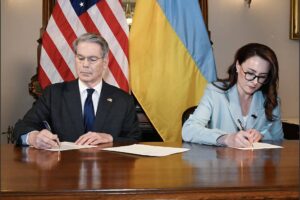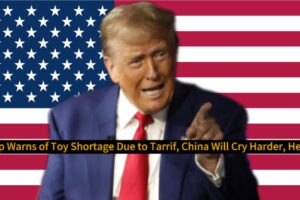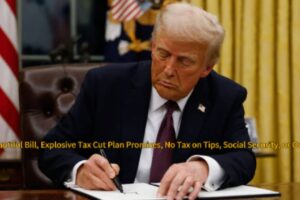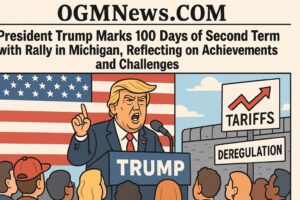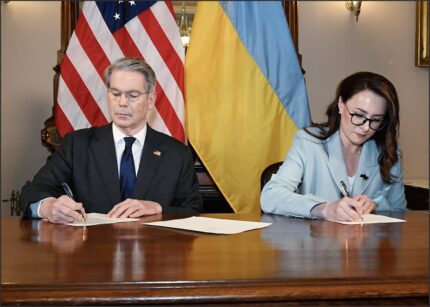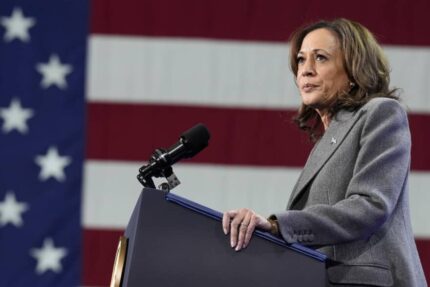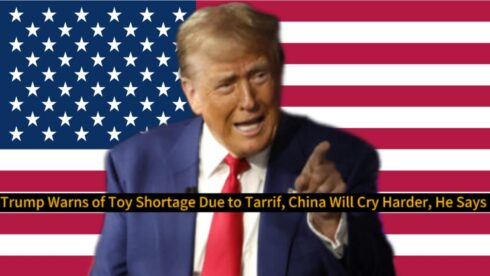The United States and Ukraine have signed a bilateral investment agreement that grants the USA access to Ukraine’s rare earth minerals and commits both nations to a 50/50 reconstruction investment partnership. The announcement was made Wednesday by the U.S. Treasury Department, marking a milestone in post-war economic planning and resource security amid ongoing geopolitical tensions.
A New Economic Alliance for Reconstruction
The agreement establishes the United States-Ukraine Reconstruction Investment Fund, described by Treasury officials as a forward-looking “economic partnership.” Although specific financial figures were not disclosed, the deal is structured to fund infrastructure and natural resource development inside Ukraine, using a mix of direct investment, future U.S. aid, and revenues from newly granted mineral, oil, and gas licenses.
Ukrainian Economic Development Minister Yulia Svyrydenko confirmed signing the deal and emphasized that Ukraine will not incur new debt as a result of this partnership. In a series of posts on X, she highlighted that Ukraine would retain full ownership of its natural resources, and 50% of royalties from future extraction licenses would be funneled into the fund. “This deal is an equitable partnership that ensures long-term reinvestment in the Ukrainian economy,” she wrote.
According to a Ukrainian government fact sheet, the fund will focus exclusively on future, not past, U.S. military assistance and will prioritize reinvestment into Ukraine for the first 10 years. Only after that period can profits be shared between the two partners, a clause designed to rebuild Ukraine’s war-ravaged economy.
Securing Critical Resources and USA Supply Chains
An official with the USA International Development Finance Corporation, which will help manage the agreement, explained that the fund will target “strategic investments in critical minerals, hydrocarbons, and related infrastructure” vital to U.S. national security. These include rare earth elements used in defense systems, renewable energy, and consumer electronics.
The deal explicitly allows the USA to offtake — or secure supply — of selected “vital critical minerals,” reinforcing Washington’s strategy to diversify away from Chinese and Russian mineral supplies. Ukraine is estimated to possess about 5% of the world’s rare earth reserves, although some of those deposits lie in territories currently occupied by Russia.
President Donald Trump praised the agreement in a Wednesday night interview, calling Ukraine’s rare earths “a big asset.” He added, “They have things that a lot of places don’t have. It’s time they help us help them.” This sentiment aligns with Trump’s longstanding stance that USA military support for Ukraine should yield tangible economic returns.
A Deal Long in the Making — With Tensions Along the Way
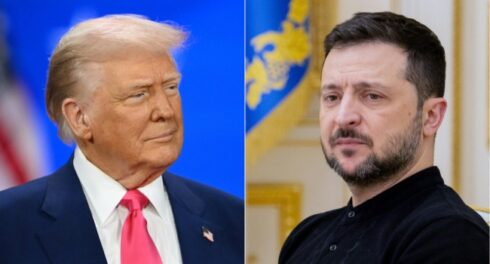
Negotiations for a minerals-based investment deal began under the Trump administration and were originally slated for signing in February during Ukrainian President Volodymyr Zelenskyy’s visit to Washington. However, a reportedly heated Oval Office meeting between Trump, Zelenskyy, and Vice President JD Vance caused a temporary derailment. During the meeting, Vance criticized Zelenskyy for showing “insufficient gratitude” for prior USA military support.
Despite public friction, negotiations persisted. Treasury Secretary Scott Bessent noted earlier on Wednesday that the USA was ready to sign the deal, though Ukraine had sought “last-minute changes.” These final adjustments paved the way for the formal agreement and its subsequent announcement by the Treasury Department.
Trump has consistently used the mineral agreement as leverage in his broader strategy to bring an end to the Russia-Ukraine war. His approach emphasizes diplomatic negotiation over prolonged conflict, although critics argue his rhetoric risks undermining Ukraine’s sovereignty.
Minerals, War, and the Struggle for Peace
The mineral deal is now a key feature in Trump’s evolving plan to end the war in Ukraine, which began with Russia’s full-scale invasion in February 2022. Trump has floated the idea of using economic incentives, such as access to Ukrainian resources, as bargaining chips in peace negotiations. However, his aggressive posture toward both Zelenskyy and Russian President Vladimir Putin has created diplomatic instability.
Trump recently threatened to intensify sanctions on Russia unless Putin agrees to cease hostilities. Following deadly Russian missile strikes on Kyiv last week that left nine dead and dozens wounded, Trump posted a blunt message to Putin on Truth Social: “Vladimir, STOP!” At the same time, his criticism of Zelenskyy as a “dictator” and his frustration with Ukraine’s refusal to acknowledge Russia’s annexation of Crimea have complicated U.S.-Ukrainian relations.
Despite these tensions, Trump and Zelenskyy held a private meeting at the Vatican last Saturday during the funeral of Pope Francis, signaling a continued backchannel dialogue aimed at conflict resolution.
Implications for Global Geopolitics and Ukraine’s Future
The minerals deal is expected to reshape Ukraine’s postwar economy and elevate the country’s role in global supply chains for critical raw materials. For the USA it secures a strategic foothold in Eastern Europe and enhances economic resilience in the face of growing competition with China and Russia for global mineral dominance.
For Ukraine, the agreement provides a rare economic lifeline at a time when reconstruction needs are surging and international support is becoming more conditional. The 50/50 structure and reinvestment model suggest a deliberate effort to avoid debt traps while retaining sovereignty over national assets.
As the war drags on and diplomacy remains uncertain, the United States-Ukraine Reconstruction Investment Fund represents a bold experiment in economic statecraft. Its success — or failure — could have ripple effects well beyond the battlefield.

